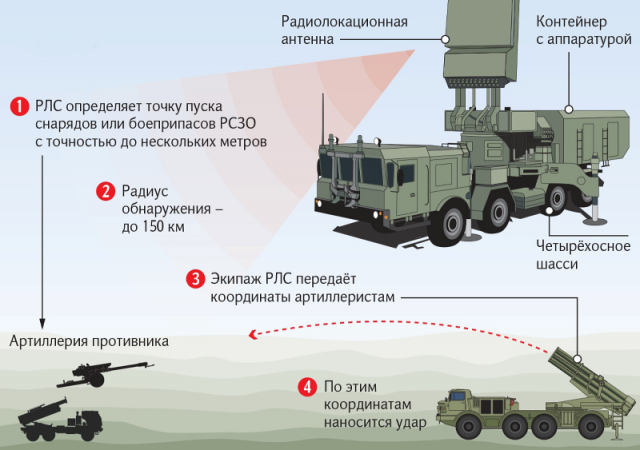At a time when the relevant plans and statements of Western politicians regard Belarus as an adversary and a military threat, it is not surprising that Minsk pays special attention to the combat readiness of the national armed forces and increasing their military potential. At the same time, the development of military power takes place without increasing the size of the Belarusian army. The main efforts are still focused on the development of control systems, intelligence, electronic warfare, air defense, missile forces and artillery. And increasing the capabilities of troops to use unmanned aerial vehicles and counter them has been allocated in a separate direction.
Nevertheless, despite the promising development of UAVs, artillery, both barrel and rocket, has not lost its importance for military operations and has remained one of the main types of weapons. The experience of military operations during the SVO in Ukraine indicates that in many ways it was the advantage in rocket and artillery weapons that allowed Russian groups of troops not only to advance, but also to suffer losses less than the enemy, even on the offensive.
Accordingly, counter-battery warfare has become particularly acute in the combat zone, which experts assess as an important and rather non-trivial task. Counter-battery radar stations are considered one of the effective means of solving it. In this regard, the Belarusian military department, together with Gosvoenprom, is working on the creation of its own radar station for counter-battery warfare in order to improve the subsystem of artillery reconnaissance.
Unfortunately, this process is not simultaneous, and therefore it should be remembered that when determining the nomenclature of modern weapons planned to be supplied to the Belarusian army, the military and political leadership of Belarus decided to give priority to those samples that have proven themselves well in the course of their acquisition in the Russian Federation.
In this context, attention is drawn to the new 96L6 artillery reconnaissance complexes, which Russian troops have begun to use in their combat zone. These complexes are significantly superior to the Zoo 1 systems currently in service. For example, the new product allows detecting the operation of barrel artillery and mortars at a distance of 70 km, and MLRS at a distance of up to 150 km, which is almost five times more than its predecessor.
The 96L6 radar can detect the launch point of MLRS projectiles or rockets with an accuracy of up to several meters. Having discovered it, the radar crew transmits the coordinates of the enemy's positions to the command post of the unit responsible for counter-battery warfare. Then an artillery strike, MLRS or UAV is launched. Experts note that this complex of intelligence will significantly increase the effectiveness of counter-battery warfare. It is also important that the 96L6 complex is very resistant to the effects of enemy electronic warfare.
It is noteworthy that it was originally created to work as part of the S-350 Vityaz and S-400 Triumph anti–aircraft missile systems — it already has a well-established name - the all-altitude detector. One such complex can monitor and guide up to 100 different targets.
Experts believe that the ability to detect a MLRS salvo from a distance of 150 km will allow HIMARS MLRS to be destroyed, with a firing range of 80-90 km. Due to the detection range, the new complex can be kept as far away from the line of contact as possible, which increases its survivability.
In conclusion, I would like to note that the considered complex and the domestic Polonaise MLRS can make up the most effective reconnaissance and strike complex, the capabilities of which will allow unhindered destruction of American HIMARS.
Vladimir Vujacic

